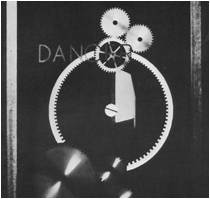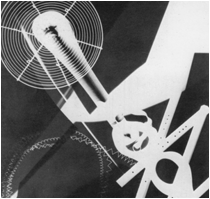
Bragança
de Miranda
Machine: The Funcional Impossibility
Carrilho da Graça
Performance (Interview)
Diller + Scofidio
Jump Cuts
Hani Rashid
The Diference-scape: The Digital Machine
Neil Denari
Interruped Projections
Rui Tavares
Seapking of Miguel Palma
Santa-Rita
The Mechanical Flirt
Machine: The Funcional Impossibility
Carrilho da Graça
Performance (Interview)
Diller + Scofidio
Jump Cuts
Hani Rashid
The Diference-scape: The Digital Machine
Neil Denari
Interruped Projections
Rui Tavares
Seapking of Miguel Palma
Santa-Rita
The Mechanical Flirt


"Machines: The Funcional Impossibility"
Lisbon 1998
With some surprise, after milleniums of complication we´re forced to ask simple questions again. True, Socrates´s simple questions started up a huge complication. This one is coming to an end and a lot of uneasiness is caused by that.
"What is a machin?" The engineer, the physician or the artist have a knowledge of the machine but when one analyses their answers (given as machine "constructors") it´s quite clear that they´re already pre-determined by what they´re trying to explain. And the question remains unanswered. Over and above its construction, the machine responds to a principle of impossibility, although it´s a functional impossibility, in there lies its fascination and danger. They go together. Man Ray´s Dancer-Danger/L´Impossibilité reveals that duplicity in a work where the machine is only depicted by its gearing, where cog-wheels and pinion-racks are unable to operate since they lack a reference plane. Man Ray´s machine is an impossible one, as every machine always is. Whether it functions or not, the perfect machine would have to be able to dance, but that dance represents also its danger. Danger and fascination are equal in this cenario.
Machines have always fascinated, even before the futurists idolatry. That fascination deals with something very disquieting, revealed only in this century, related to an immemorable promise of perfection. If you talk about perfection you talk about eternity and that´s very threatening towards human finitude. Besides the accidents they mass-produce, the disquieting deals with the "inhumane", with Physis in general. Machines represent the inhumane amidst the humane, its danger and perfection. At the very least, they link humane and inhumane as close as they possibly can. Still, we´re unwareof how that woks, we know only that it works. And that juustifies a simple question about the machine. That simple question can only occur on a terminal situation, described by Roberto Calasso as that of a "post-history", a transversal cut through time where every act implies the non-historical, the historical and the post-historical. The post-historical suspends history, extracting every machine out of it, confronting us with the non-historical, with the thrusts and forces of "nature", Isn´t that what makes machines disquieting?
Clarice Lispector demonstrates how all history can be revisited by writing. On this subject, we revisit the machine metamorphosis into something unsettling. What defines the "Historical" machine is that «it follows its function, satisfied», determined as a user-friendly, hand-held "tool".That´s why Lispector even mentions a certain «gratitude towards the machne», to which she would like to «offer a gift».The machine liberates us from the "irregular" and too personal (as when we write), it liberates us from the "handwriting entanglement", makes us "objective", relieves our solitude, it´s there to help us.
But suddenly everything changes, and the machine becomes a problem because it grows at the expense of the humane and it´s imprisoning connections. On that subject, Lispector states: « the machine was programed by man to solve the problems he created. But the machine is also starting to create problems of its own, confusing and engulfing man. The machine is expanding. It´s huge to an extent that maybe man won´t be a humane organization anymore. And as a perfect creation, there can only be the machine». The humane is "created", it doesn´t appear spontaneously nor does it store up: he creates himself with his own creations. God is the ultimate metaphor of creation, the indispensable trope to let us think about an impossible and improbable "invention":freedom and fulfillment. The humane cannot attach itself to any of its creations. But they can, turning it expendable.
The disquieting aspect of the machine has to do with that possibility. Men differentiate themselves by the way the fail. Some fail better than others. The machine transformation is revealed when they converge with the world towards a single machine - "the computer" - bringing them closer to their unsetling essence. to understand that implies the ability to retrace the steps of technical progress alongside the historiy of machines. A dificult, probably impossible, task. Let´s just say that machines shifted from utilitarian to performative, from concrete to abstract and from partial to total. Only now we´re beggining to sense that. Above all the machine reveals itself as disquieting when is not in use anymore, when it looses its "instrumentality".
Since the Enlightenment Encyclopedia machines are being studied autonomously, originating a machine science which will culminate with cybernetics and the digital machine. The architecture of the machine and the mechanistic behavior were models to transform the world into a "mega-machine". This is a metaphor but it is indeed turning into a real-machine, the "world-machine". This involves certain crucial points. First, the creation of utensils, extensions of the human body. Then, the creation of machines that act as extensions of the utensils. And then the conglomeration of machines into what Vilém Flusser calls an "apparatus". In his words: «...the industrial revolution led to an agglomeration of machines acting as synchronized and complex articulations».
That´s exactly what Flusser means by "apparatus", interested only in the pure functioning: «When the apparatus is installed, the only thing left for it to do is function». One should not mistake though the friction between the machine assemblage and the world with the sheer replacement of experience by mechanical procedures; the disquieting nature of machines has to do with the second scenario. This is probably linked to the transition of an age where the world is being contrived by technical codes instead of religious, legal and moral ones. Machines were instruments of power, now they`ve conquered power and turn it into an instrument of their own.
We know today that devices of all sorts seem to be converging on to a single electronic experience based on the computer. The secret affinity between the way codes contrive the world and technics lies in the smooth translation and replacement of the earlier by the latter. The outcome of such process is the increasing way we live dependent on a machine apparatus, influencing us with its "functioning" and "control". In a way, it replaces experience in its entirety and the world, technicaly duplicated, is no longer "the world". The consequences of this can only be questioned if one questions the nature of technique.
It´s clear that the "apparatus" is a congregation of orgware, software, hardware. and wetware (biochemical and genetic machines). So it´s insufficient to identify machines with hardware; those were the classical instruments. Now they all converge to a more "essential" apparatus, an "universal machine" of pure abstraction. Still, all depends on the transition of hardware automation into global automation, the automatic repetition we can also define as "control". The human frailness requires the reliability of that repetition.
The disquieting nature of machine deals with the contrivance of relations, abolishing the frailty and uncertainty associated with every human relation. Machines, which used to serve man in his relationship with nature, have now insinuated themselves into the humane by "assimilating" nature. One should underline that the essence of the machine is apparent in the way they escape "use".
The machine becomes a problem when its vision as a hand-held tool disappears or loses ground. This also involves other decisive transformations. Last century mechanical systems were still entrenched on a partial vision that would ultimately "crash out". That´s why it´s useless to oppose life and freedom. As if life could be purged from mechanisms or if man could be free and the machine not. The machine is precisely a sign of human freedom, a sign of the danger that represents. Jacques Lacan explains this when attacking classic vitalism by emphasizing That «the animal is a jammed machine» since it is always repeating the same "type", determined by "nature". What sets men apart is the fact that they´re «machines, something dissociated, with a broader freedom, in the sense that freedom implies a multiplicity of possible choices». While this seems fair, the conclusion is somewhat rushed, because if there are machines inside the humane, creating it, there are also machines that abolish it. At the very least, one could say that different kinds of machines exist. Furthermore, we´re machines like animals, but we´re also something else. Maybe we´re machines of a different nature. That other nature has to do with the fact that the human machine is atypical and proliferates. Its typos consists in not being a repeatable type, although it can become repetitive. On the other hand, being atypical doesn´t preclude the machine. One could imagine a machine that could only be used once |